Night-time Walk Around the Foreign Settlements

-
Start
-
About3minutes
-
1Higashi-yamate Ko No.13 House
-
About2minutes
-
2Kwassui Women’s University
-
About1minutes
-
3Higashi-yamate No. 12 House
-
About3minutes
-
4No. 12 School Building
5Russell Memorial Hall
-
About5minutes
-
6Higashi-yamate Western-Style Houses
-
About2minutes
-
7Confucius Shrine and Historical Museum of China
-
About9minutes
-
8Minami-yamate Rest House
-
About1minutes
-
9Kinen Slope
-
About1minutes
-
10Oura Cathedral and Former House of the Archbishop
-
About1minutes
-
11Glover Garden
-
About4minutes
-
12Minami-yamate District Townscape Preservation Center
-
About3minutes
-
13The Former Hong Kong and Shanghai Bank Nagasaki Branch Museum
-
About2minutes
-
14Bekko Crafts Museum
Goal
-
Higashi-yamate Ko No.13 House
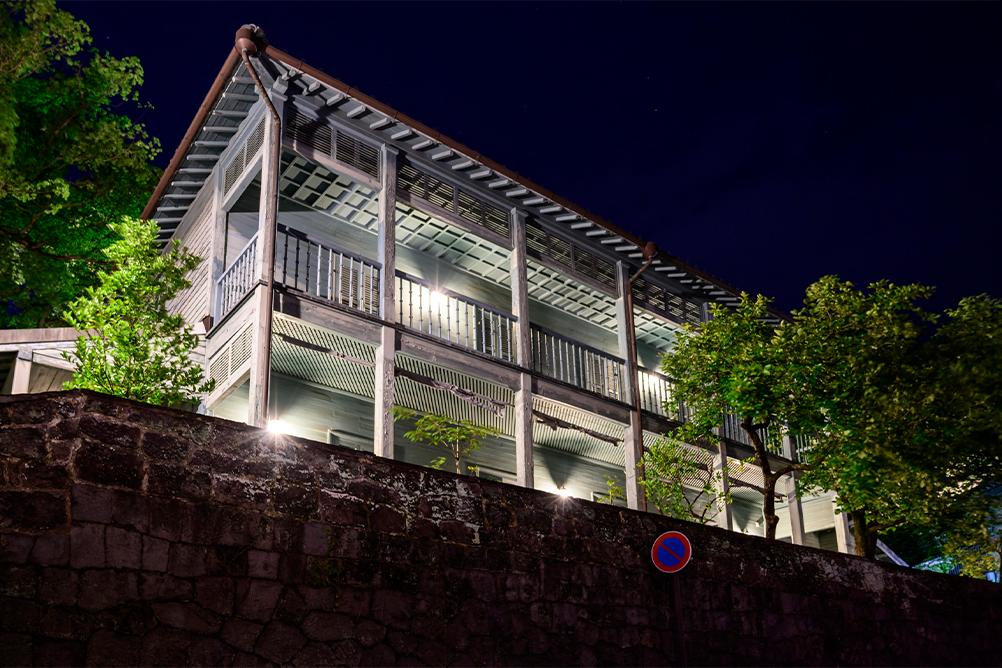
The building, constructed as a rental house, features a layout where the main house and annex are arranged in a single row to match the shape of the site. Both the first and second floors have balconies facing southwest. At night, the building is illuminated, and the trees in the garden are also lit up.
-
Kassui Women’s University
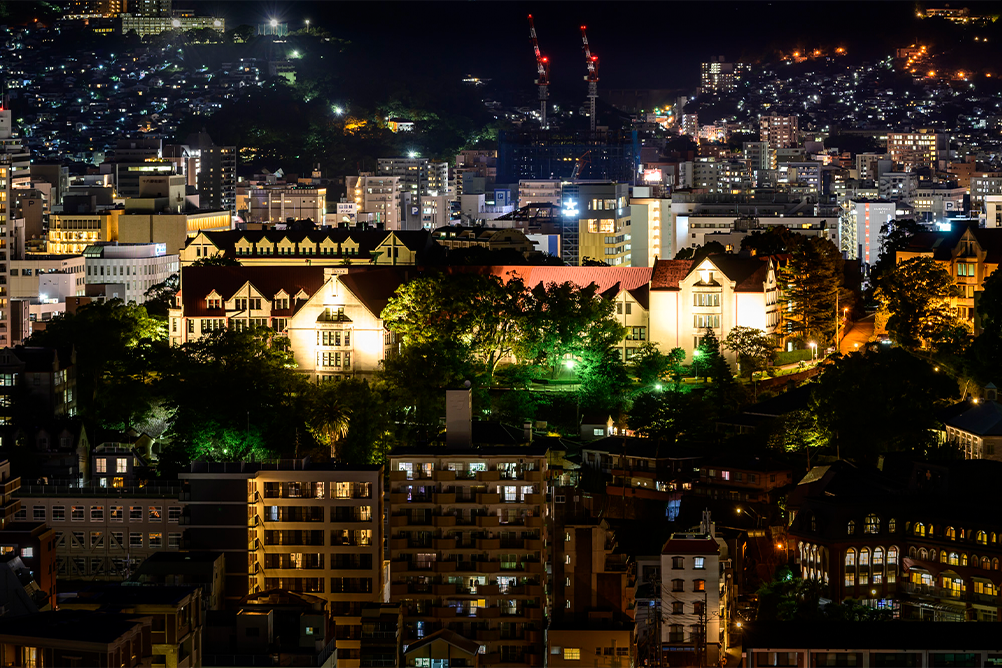
This distinctive building, with a red roof and an octagonal hall at its center, extends in the southwest, southeast, and northwest directions. It was founded by American missionary Elizabeth Russell as a school for women’s education. In the evening, the main building, which includes a large chapel and a small chapel, is beautifully illuminated. You can also enjoy the view from Glover Garden and the Glover Sky Road.
-
Higashi-yamate Western-Style Houses
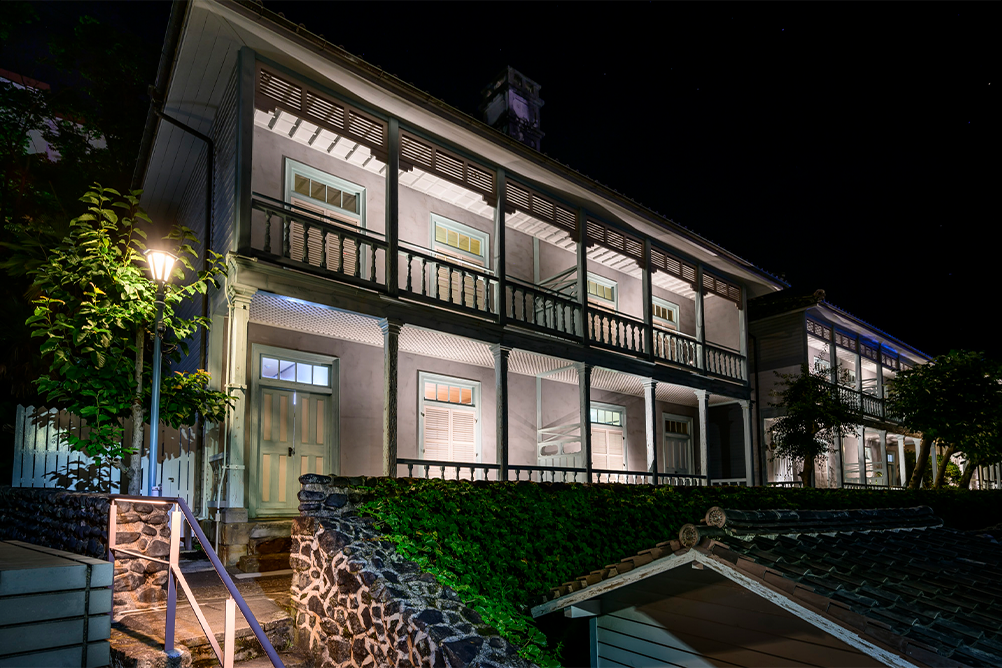
These seven buildings, situated on the narrow and sloping terrain of Higashi-yamate, exhibit distinctive features such as Chinese-inspired designs in elements like the transoms.
At night, each building is beautifully lit up, allowing visitors to thoroughly appreciate them while touring the surroundings. The illumination of these residential remains is a rare sight in Japan. -
Confucius Shrine and Historical Museum of China
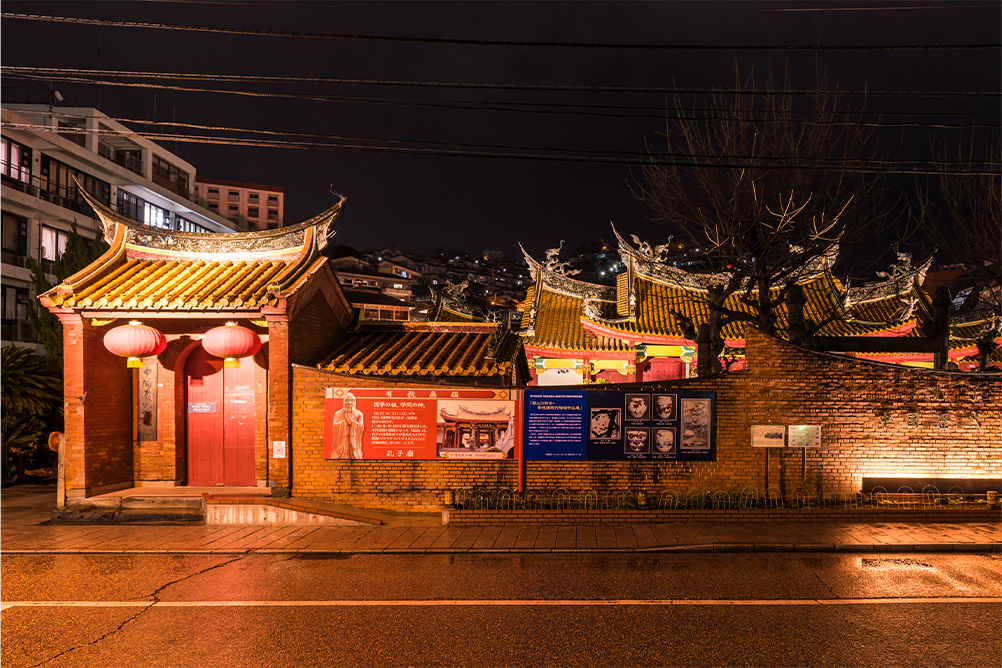
Originally established to enshrine Confucius’ relics, this shrine was constructed by the Chinese government during the Qing dynasty and by overseas Chinese residents. Adjacent to it is the Historical Museum of China. Lanterns and lighting create a vivid red glow, emphasizing the grandeur of the Taisei-den and the Gimon, inviting visitors into a powerful and passionate world.
-
Minami-yamate Rest House
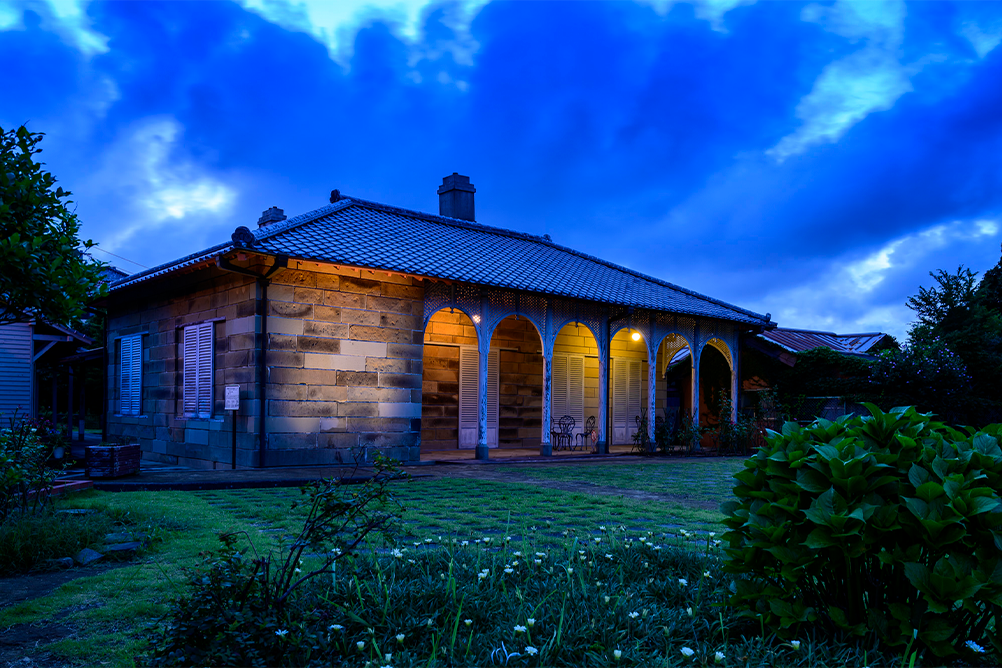
The exterior walls of this building are solidly constructed with stone, and wooden and stone pillars are used to build the terrace, showcasing the characteristics of early Western-style residences in the foreign settlement. At night, warm lights highlight both the building and the garden’s greenery.
-
Kinen Slope
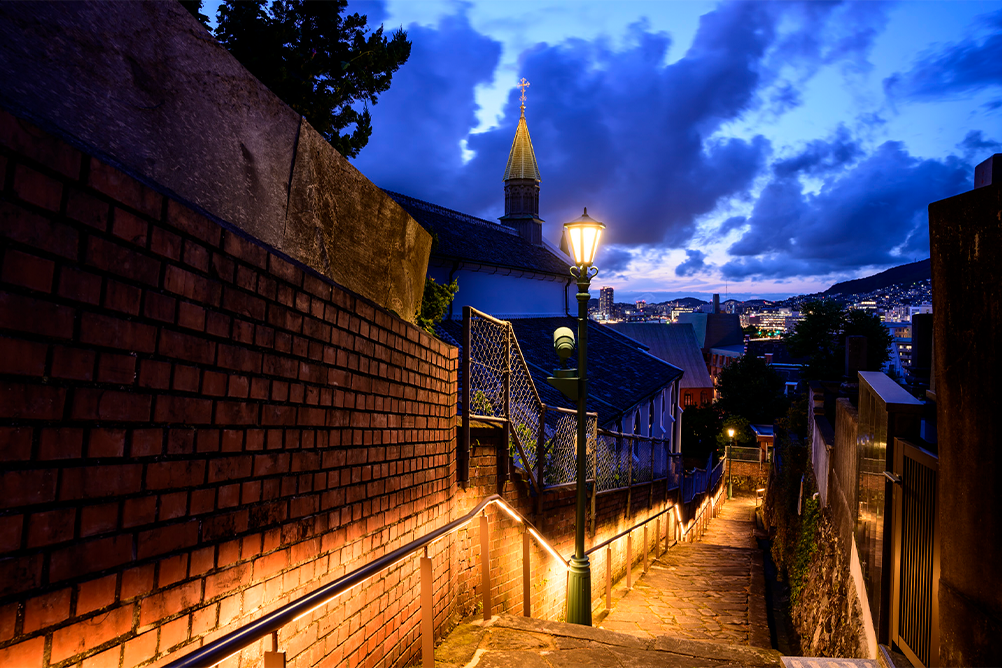
Kinen Slope is a narrow path with stairs that runs alongside Oura Cathedral. It is a valuable remnant from the foreign settlement era, with preserved cobblestones. At night, the handrail lights illuminate the road surface and the surrounding space, revealing a beautiful view of Nagasaki Port beyond the slope.
-
Oura Cathedral
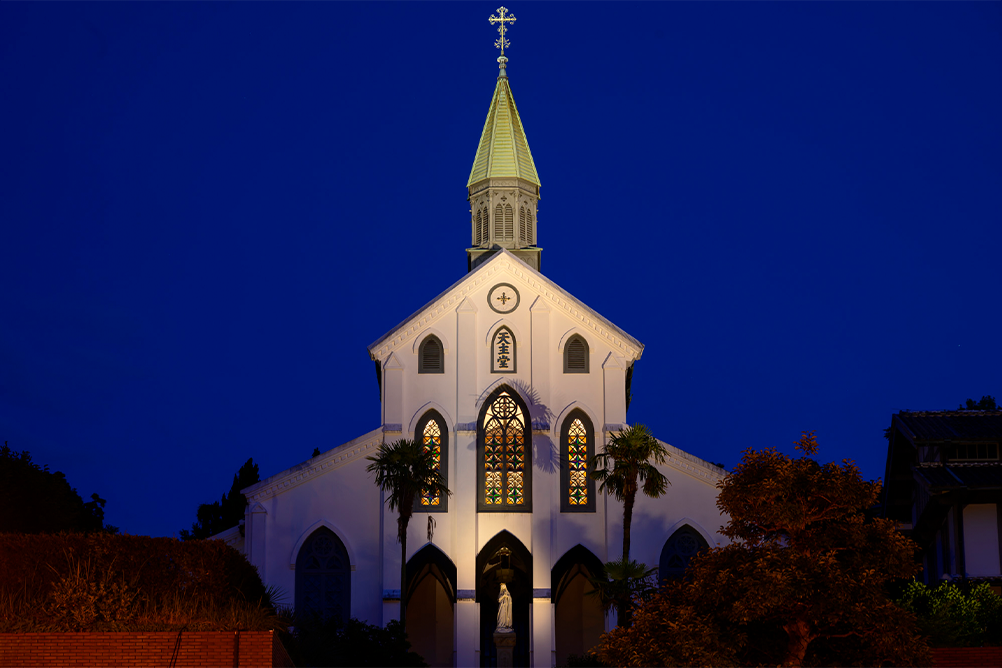
Designated as a national treasure, Oura Cathedral is a World Heritage Site, part of the “Hidden Christian Sites in the Nagasaki Region.” It is the oldest existing church in Japan. At night, the building and statues of the Virgin Mary are illuminated, and light filtering through the interior highlights the stained glass, creating a captivating impression with a quaint atmosphere.
-
Glover Garden
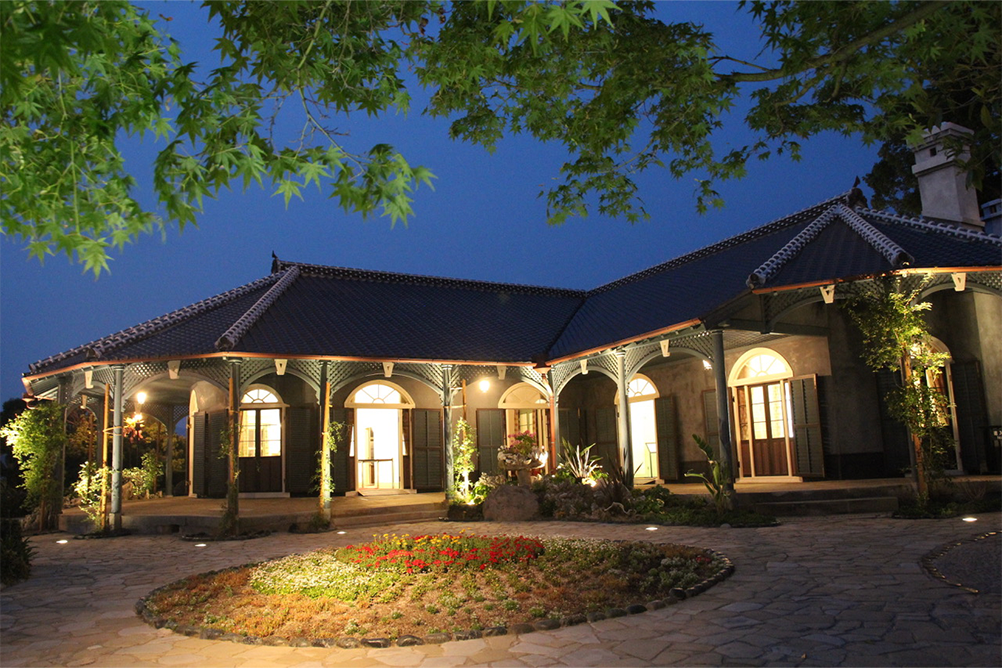
Glover Garden, a World Heritage site, includes the former Glover House (part of the “Sites of Japan’s Meiji Industrial Revolution”) along with other relocated and restored famous Western-style houses such as the Former Ringer House and the Former Alt House. Other than the illumination of each Western-style house, the panoramic view of Nagasaki Port from the garden is also a must-see.
-
The Former Hong Kong and Shanghai Bank Nagasaki Branch Museum

Designated as a national important cultural property, this building stands out among Nagasaki’s Western-style buildings. Its grand and dignified appearance plays a crucial role in preserving the landscape of the coastal area and the Minami-yamate district where former foreign settlements are located. At night, the building is beautifully illuminated, and its appearance, highlighted by light, looks majestic and vividly conveys history.

